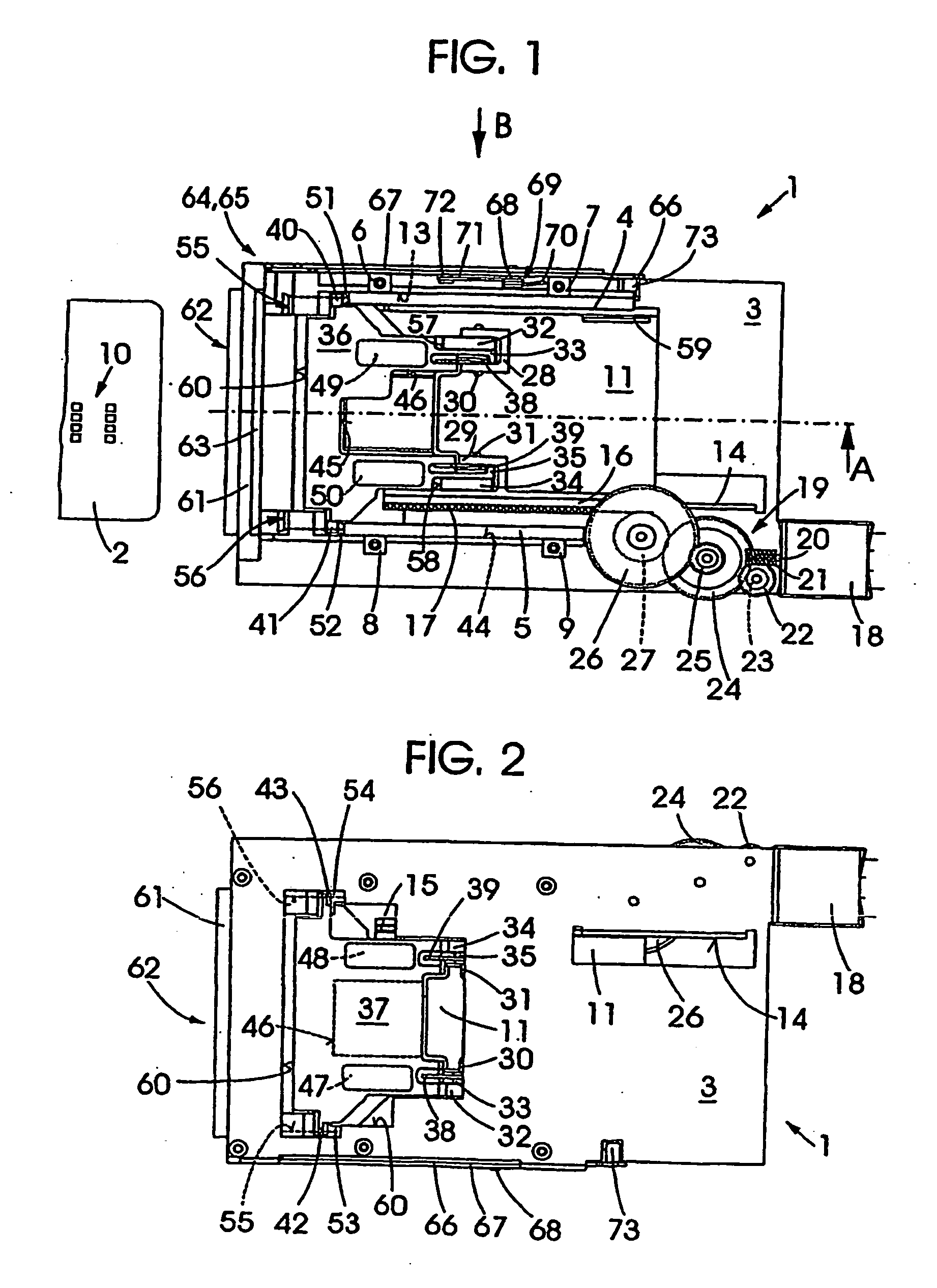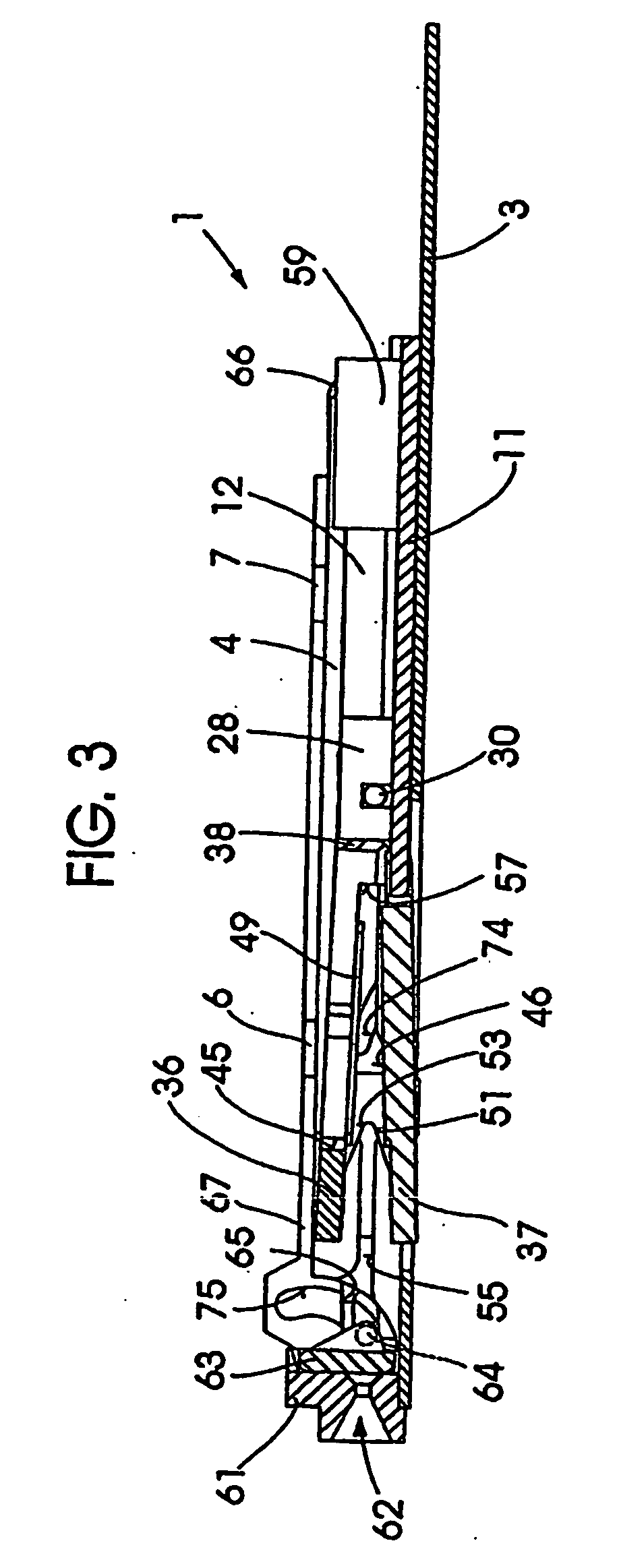Chip card receiving device comprising a carriage for holding a chip card
a chip card and receiving device technology, applied in the direction of maintaining the alignment of the head carrier, manufacturing tools, instruments, etc., can solve the problems of increased risk of contact interruption between the read/write contact assembly, chip cards are not always handled with the requisite care, chip cards can be damaged or deformed, etc., and achieve the effect of saving spa
- Summary
- Abstract
- Description
- Claims
- Application Information
AI Technical Summary
Benefits of technology
Problems solved by technology
Method used
Image
Examples
Embodiment Construction
[0019]As can be seen from the drawings, the chip card receiving device 1, to which a chip card 2 has been symbolically assigned, exhibits a torsionally rigid carrier 3 on which rails 4 and 5 are fastened, preferably formed on by outsert injection molding. The supports 6, 7, 8 and 9 assigned to the rails 4, 5 and featuring tapped holes not further designated serve the purpose of fastening the chip card receiving device 1, e.g. onto a printed circuit board on which expediently a contact assembly assigned to the board contacts 10 of the chip cards 2 is arranged. With 11 a carriage is designated which by means of a cheek 12 engages with an undercut 13 provided in the rail 4 and which is mounted moveably in longitudinal direction on a strip 14 configured on the carrier 3, to which strip a slot 15 (FIG. 2) configured in the carriage 11 is assigned. A further cheek 16 of the carriage 11 features toothing 17 via which the carriage 11 is functionally connected by means of gearing with a posi...
PUM
 Login to View More
Login to View More Abstract
Description
Claims
Application Information
 Login to View More
Login to View More - R&D
- Intellectual Property
- Life Sciences
- Materials
- Tech Scout
- Unparalleled Data Quality
- Higher Quality Content
- 60% Fewer Hallucinations
Browse by: Latest US Patents, China's latest patents, Technical Efficacy Thesaurus, Application Domain, Technology Topic, Popular Technical Reports.
© 2025 PatSnap. All rights reserved.Legal|Privacy policy|Modern Slavery Act Transparency Statement|Sitemap|About US| Contact US: help@patsnap.com



